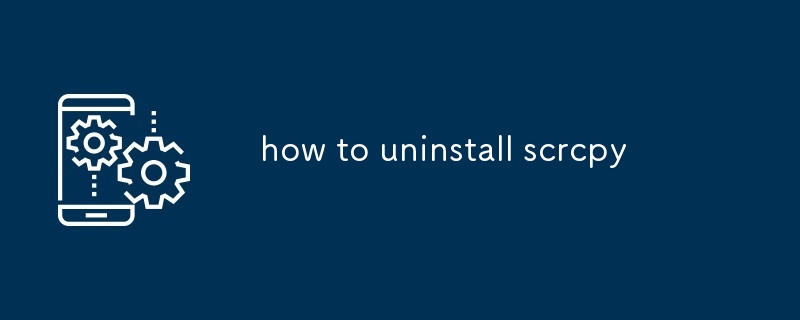Home >Software Tutorial >Mobile Application >how to uninstall scrcpy
how to uninstall scrcpy
- DDDOriginal
- 2024-09-04 14:45:161326browse
This guide provides comprehensive instructions for completely uninstalling Scrcpy on Mac and Windows systems. It emphasizes the importance of removing all traces, including related files in the user's home directory and system preferences. Additional

How to Uninstall Scrcpy
How do I completely remove scrcpy from my Mac?
To completely remove scrcpy from your Mac, follow these steps:
- Open the Finder and navigate to the "Applications" folder.
- Find the "Scrcpy" application and drag it to the Trash can.
- Empty the Trash can to permanently delete the application.
What is the best method to uninstall scrcpy on Windows?
The best method to uninstall scrcpy on Windows is through the Control Panel:
- Open the Control Panel from the Start menu.
- Click on "Programs and Features".
- Find "Scrcpy" in the list of installed programs.
- Click on "Uninstall" and follow the on-screen instructions.
How can I ensure that scrcpy is uninstalled without leaving any traces on my system?
To ensure that scrcpy is uninstalled without leaving any traces on your system, it is recommended to follow these additional steps:
-
Delete Scrcpy-related files from your home directory:
- Go to " Finder / Library / Application Support " and delete the "com.genymobile.scrcpy" folder.
- Go to " Finder / Library / Caches " and delete the "com.genymobile.scrcpy" folder.
- Go to " Finder / Library / Preferences " and delete the "com.genymobile.scrcpy.plist" file.
-
Uninstall scrcpy from the Terminal: Open the Terminal and type the following command:
<code class="bash">sudo pip3 uninstall scrcpy</code>
- Restart your computer: Restarting your computer will remove any temporary files or registry entries related to scrcpy.
The above is the detailed content of how to uninstall scrcpy. For more information, please follow other related articles on the PHP Chinese website!
Related articles
See more- It's Not Just You, YouTube Looks Like Crap Right Now
- How to charge for Kiwi TV and the specific operation method?
- How to log out of the Beastie app. Introduction to how to log out of the Beastie app.
- How to view the driving recorder on the Tesla app and how to operate it
- Ragnarok New Sailing City Commission Board Mission Triggering Strategy

